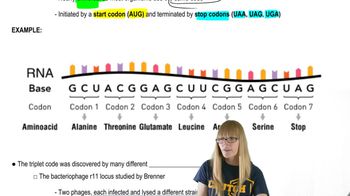Dominant mutations can be categorized according to whether they increase or decrease the overall activity of a gene or gene product. Although a loss-of-function mutation (a mutation that inactivates the gene product) is usually recessive, for some genes, one dose of the normal gene product, encoded by the normal allele, is not sufficient to produce a normal phenotype. In this case, a loss-of-function mutation in the gene will be dominant, and the gene is said to be haploinsufficient. A second category of dominant mutation is the gain-of-function mutation, which results in a new activity or increased activity or expression of a gene or gene product. The gene therapy technique currently being used in clinical trials involves the 'addition' to somatic cells of a normal copy of a gene. In other words, a normal copy of the gene is inserted into the genome of the mutant somatic cell, but the mutated copy of the gene is not removed or replaced. Will this strategy work for either of the two aforementioned types of dominant mutations?
Table of contents
- 1. Introduction to Genetics51m
- 2. Mendel's Laws of Inheritance3h 37m
- 3. Extensions to Mendelian Inheritance2h 41m
- 4. Genetic Mapping and Linkage2h 28m
- 5. Genetics of Bacteria and Viruses1h 21m
- 6. Chromosomal Variation1h 48m
- 7. DNA and Chromosome Structure56m
- 8. DNA Replication1h 10m
- 9. Mitosis and Meiosis1h 34m
- 10. Transcription1h 0m
- 11. Translation58m
- 12. Gene Regulation in Prokaryotes1h 19m
- 13. Gene Regulation in Eukaryotes44m
- 14. Genetic Control of Development44m
- 15. Genomes and Genomics1h 50m
- 16. Transposable Elements47m
- 17. Mutation, Repair, and Recombination1h 6m
- 18. Molecular Genetic Tools19m
- 19. Cancer Genetics29m
- 20. Quantitative Genetics1h 26m
- 21. Population Genetics50m
- 22. Evolutionary Genetics29m
17. Mutation, Repair, and Recombination
Types of Mutations
Problem 20b
Textbook Question
The partial amino acid sequence of a wild-type protein is
… Arg-Met-Tyr-Thr-Leu-Cys-Ser …
The same portion of the protein from a mutant has the sequence
… Arg-Met-Leu-Tyr-Ala-Leu-Phe …
Give the sequence of the wild-type DNA template strand. Use A/G if the nucleotide could be either purine, T/C if it could be either pyrimidine, N if any nucleotide could occur at a site, or the alternative nucleotides if a purine and a pyrimidine are possible.
 Verified step by step guidance
Verified step by step guidance1
Step 1: Understand the relationship between amino acids and codons. Each amino acid is encoded by a three-nucleotide sequence called a codon. Use the genetic code table to determine the possible codons for each amino acid in the wild-type protein sequence.
Step 2: Translate the wild-type amino acid sequence (Arg-Met-Tyr-Thr-Leu-Cys-Ser) into its corresponding mRNA codons. For example, Arg can be encoded by CGU, CGC, CGA, or CGG; Met is encoded by AUG; and so on. Identify all possible codons for each amino acid.
Step 3: Convert the mRNA codons into the complementary DNA coding strand sequence. Remember that in DNA, A pairs with T, and G pairs with C. For example, AUG in mRNA corresponds to TAC in the DNA coding strand.
Step 4: Determine the DNA template strand sequence by taking the complement of the DNA coding strand. For example, if the coding strand has TAC, the template strand will have ATG. This is the strand used during transcription to produce the mRNA.
Step 5: Use the notation A/G, T/C, or N for ambiguous nucleotide positions where multiple codons could encode the same amino acid. For example, if Arg can be encoded by CGU, CGC, CGA, or CGG, the corresponding DNA template strand might include positions with A/G or T/C to reflect the ambiguity.
 Verified video answer for a similar problem:
Verified video answer for a similar problem:This video solution was recommended by our tutors as helpful for the problem above
Video duration:
2mPlay a video:
Was this helpful?
Key Concepts
Here are the essential concepts you must grasp in order to answer the question correctly.
Genetic Code
The genetic code is a set of rules that defines how the sequence of nucleotides in DNA corresponds to the sequence of amino acids in proteins. Each amino acid is encoded by a specific triplet of nucleotides, known as a codon. Understanding the genetic code is essential for translating the amino acid sequences back into their corresponding DNA sequences.
Recommended video:
Guided course

The Genetic Code
DNA Template Strand
The DNA template strand is the strand of DNA that serves as a template for RNA synthesis during transcription and for DNA replication. It is complementary to the coding strand and dictates the sequence of nucleotides in the newly synthesized strand. Knowing how to derive the template strand from an amino acid sequence is crucial for solving the given problem.
Recommended video:
Guided course

Double Strand Breaks
Mutations and Their Effects
Mutations are changes in the nucleotide sequence of DNA that can lead to alterations in protein structure and function. Understanding the types of mutations, such as substitutions, insertions, or deletions, is important for analyzing differences between wild-type and mutant protein sequences. This knowledge helps in predicting how these changes might affect the corresponding DNA sequences.
Recommended video:
Guided course

Maternal Effect
Related Videos
Related Practice
Textbook Question
643
views


